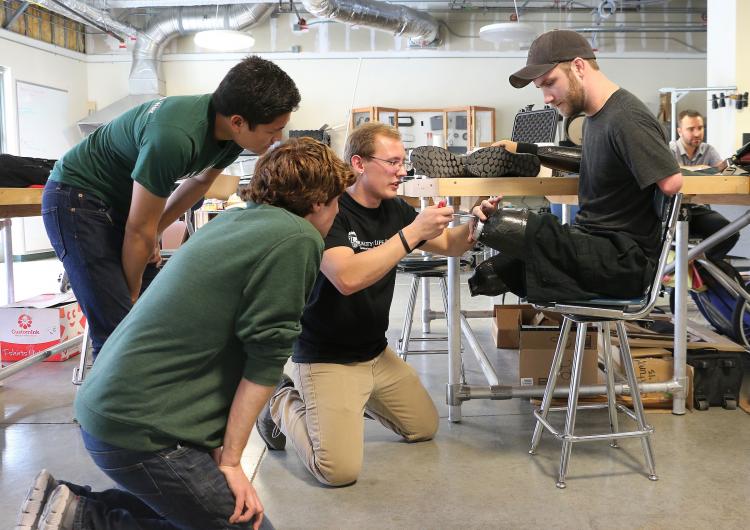Cycling is the best form of exercise for leg amputees, according to an award-winning study led by mechanical engineering student Greg Orekhov.
Orekhov’s work summarizing the findings won first place this month in the Bachelor’s-level student paper competition at the 2018 World Congress of Biomechanics Conference in Dublin, Ireland.
The study looked at transtibial (below the knee) amputees, who are at high risk for developing osteoarthritis in their intact, or non-amputated, leg.
Osteoarthritis occurs when the cartilage and underlying bone get worn down, which can lead to a need for knee replacement. Symptoms of the condition include pain, swelling and stiffness, according to the Centers for Disease Control and Prevention.
With a grant from Army Medical Research and Materiel Command, Orekhov and his team sought to find which exercises should be recommended for wounded veterans in need of rehabilitation. The study featured 10 amputees and 10 control group members.
Members of control groups do not receive treatment by researchers and are used as a benchmark to measure how the other tested subjects do. Hanger Prosthetics & Orthotics was the chief source of amputee subjects.
The subjects performed three types of exercise – walking, cycling and elliptical – to test the impact on the intact leg, using motion analysis and computer modeling.
“There was no asymmetry or significant differences between amputee and control subjects in cycling,” Orekhov said.
Elliptical training is better on amputees than walking, but cycling is best, Orekhov said.
The conclusions are preliminary, he added, and results could change with expanded analysis. But it was enough to take the findings to Ireland, where 27 presenters participated at the undergraduate level.
Held every four years, the congress is billed as the premier meeting worldwide in the biomechanics field.
Now back in the States, Orekhov plans to continue sharing his work.
“An expanded paper of the work I presented at this conference will be included in the 2019 edition of ‘The Journal of Biomechanical Engineering,’” Orekhov said.
Orekhov is also continuing his studies as a graduate student.

“By the time he defends his MS thesis, we believe Greg’s work will allow us to develop exercise guidelines for transtibial amputees that will enable them to sustain lifelong fitness while minimizing their risk of developing osteoarthritis down the road,” said Stephen Klisch, Cal Poly mechanical engineering professor and principal investigator.
Orekhov plans to pursue a Ph.D. in bioengineering, working on improving muscle function for kids with cerebral palsy.
“My plans immediately after that are uncertain, but I plan to start a company to design low-cost intelligent prostheses in the future,” he said.


